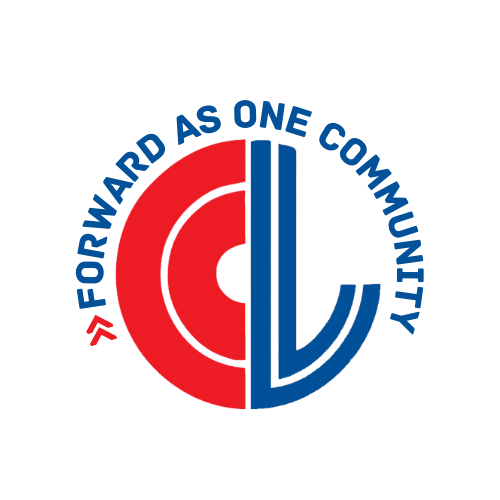December 1, 2025
If you’re a busy professional, “keeping up with tech” can feel like a second full-time job you did not apply for. New tools launch daily. Your inbox is full of “game-changing” software. Meanwhile, you still have customers to serve, a team to lead, and probably at least 47 open browser tabs. Right? While there’s enormous pressure to keep up with innovation these days (it’ll make you more efficient), you can’t be on top of everything. And you don’t need to be. You just need a simple system that keeps you informed about the right things, so you can make smart, confident decisions to reach maximum efficiency without losing your mind (or your evenings). Start by Shrinking What “Tech” Means “Tech” is a massive category. If you treat all of it as equally important, you will burn out and do nothing. Instead, filter what you pay attention to through three questions: Will this help me grow revenue? Things that fall into this category include: better customer relationship tools, email marketing, online booking, e-commerce, paid ads, social scheduling. Will this save time or reduce friction? Things that fall into this category include: automation, project management, AI assistants, e-signatures, online forms, scheduling apps. Will this reduce risk? Things that fall into this category include: cybersecurity basics, password managers, backup systems, compliance tools. If a new technology does not hit at least one of those, it goes into the “interesting, but not for me right now” pile. You acknowledge it, you do not adopt it. Build a Tiny “Tech Intel” Ritual Keeping up with tech should not be an endless scroll. Otherwise, it becomes much like the empty promises you make to yourself of “one more reel, then back to work.” Treat it like you would your financials or strategy. Give it a container. Once a week, block out fifteen minutes on your calendar and label it “Tech Check In.” That becomes your standing appointment to look up, not just grind through. During that time, you are not randomly Googling. You are returning to a small set of trusted sources you have already chosen. Which brings us to your next move. Making the most of your time means having the learning materials at your disposal when you’re ready to review them. But ensure you keep this appointment with yourself. Otherwise, things stack up and you end up deleting them and not learning anything. Let a Few Smart People Review Things for You You do not need to read everything. You need to follow a few people who already do. Pick two or three “filters” you like, such as a newsletter that reviews tools for small businesses or your specific industry, a YouTube channel that breaks down tools and trends in simple language, or a podcast that recaps what actually matters each week. The humans behind these channels are doing the heavy lifting so you don’t have to. Your job is not to chase every link they share. Your job is to skim their summaries and ask a simple question: Could this help our revenue, our time, or our risk in the next 6 to 12 months? Again, schedule the time to actually read or listen. Subscribing is not the same as using it. During your Tech Check In, spend those fifteen minutes with their recap instead of random scrolling. Find a “Guru” Who Speaks Your Language It also helps to have one or two “gurus” you follow consistently. Not the loudest tech celebrity shouting about the future, but someone who translates tools for real-world businesses. Look for people who work with companies roughly your size, explain things in plain language, focus on outcomes and use cases (not just features), and share honest pros and cons instead of hype. You can find them by asking peers who they follow, noticing which experts show up again and again on business podcasts you like, or searching phrases like “small business tech review,” “tools for [your industry],” or “non techie tech tips.” When you find a voice that feels grounded and practical, stick with them. Consistency beats chasing a new expert every month. Let AI Be Your Research Assistant You do not have to read every two-thousand-word review to get the point. This is where AI can quietly make your life easier. You can copy an article into an AI tool and ask it to summarize the key takeaways for a small business owner and flag any obvious risks. You can paste a software homepage and ask what the product actually does, who it is best for, and whether it is overkill for a business with fewer than twenty employees. You can ask for a simple comparison between two tools you are considering. You can even create your own GPT that you train on your business and talk to it about how those products may or may not be a good fit for you. The goal is not to become a technician or a tech consultant. Instead, you want to quickly understand whether something is worth a deeper look. Use Your Network as a Shortcut You are not the only one trying to sort this out. Other people are already testing things. Borrow that. At your next networking event, ask one question that cuts to the chase: “Is there any app or software you started using this year that you now swear by?” Inside your own organization, invite more tech-comfortable team members to do short “show and tell” sessions. Ten minutes, one tool, one way it saves them time. And do not forget your chamber. Many already host tech focused webinars, workshops, or lunch-and-learns that are curated for small businesses. That curation is half the value. Experiment. Do Not Overhaul Everything. The fastest way to stall on technology is to decide you need a giant digital transformation before you do anything. You do not. You need small, low-risk experiments. Start with a single problem: missed appointments, slow invoicing, messy lead follow up, repetitive manual tasks. Choose one tool that might help, ideally with a free trial or month-to-month plan. Decide what success would look like. Fewer no-shows. Faster payment. Less time spent on a tedious process. Run a 30-to-90-day test with one team or one process, then choose to keep it, switch it, or drop it. That is it. No epic overhaul. Just repeated, thoughtful experiments. Park the Shiny Objects on a “Not Now” List You will see plenty of tools that look cool but are not right for this season in your business. Instead of feeling guilty for not jumping in, create a simple “Not Now” list. It can be a note in your phone or on Notion (it’s a cool app), a page in your planner, or a shared document. Any time you hear about something promising that is not urgent, park it there with a short note like “future CRM upgrade” or “AI chatbot to explore next year.” When you plan your quarterly or annual priorities, you can revisit that list and choose one or two to evaluate. You are not saying “never.” You are saying “not right this minute.” You Are Aiming for Literacy, Not Perfection You are not trying to become a tech expert. You are becoming a tech-literate decision maker . That looks like this: You understand, at a high level, what matters and what does not. You stay curious in small, consistent doses. You test tools in bite-sized ways. You keep the focus on how technology supports people, not the other way around. If you put even a light system around how you track and test new tools, you will be far ahead of businesses that only react when a trend goes viral. You do not need every new app. You need the right few that make your work smoother, your customers happier, and your business more resilient. That is what “keeping up with tech” looks like when you have an actual life. Read More: 15 Tech Tools to Elevate Your Work-Life Balance How to Make Time for Innovation Maximizing Efficiency: Tools and Techniques to Boost Team Productivity ----------------- Christina Metcalf is a writer and women’s speaker who believes in the power of story. She works with small businesses, chambers of commerce, and business professionals who want to make an impression and grow a loyal customer/member base. She is the author of The Glinda Principle , rediscovering the magic within. _______________________________________ Medium: @christinametcalf Facebook: @tellyourstorygetemtalking Instagram: @christinametcalfauthor LinkedIn: @christinagsmith




